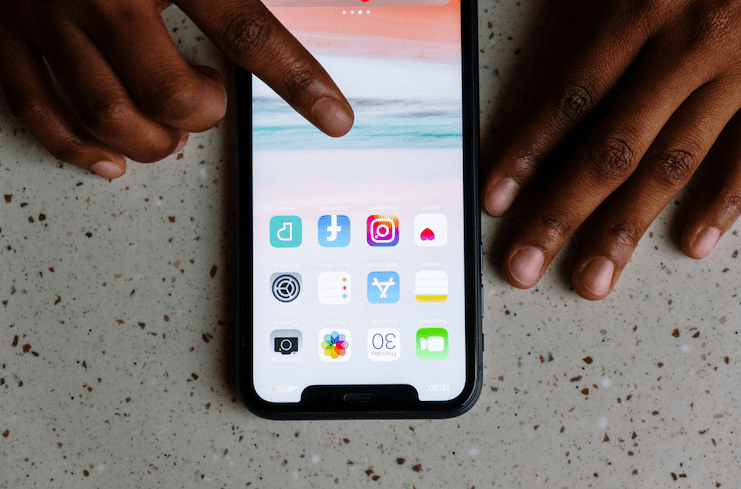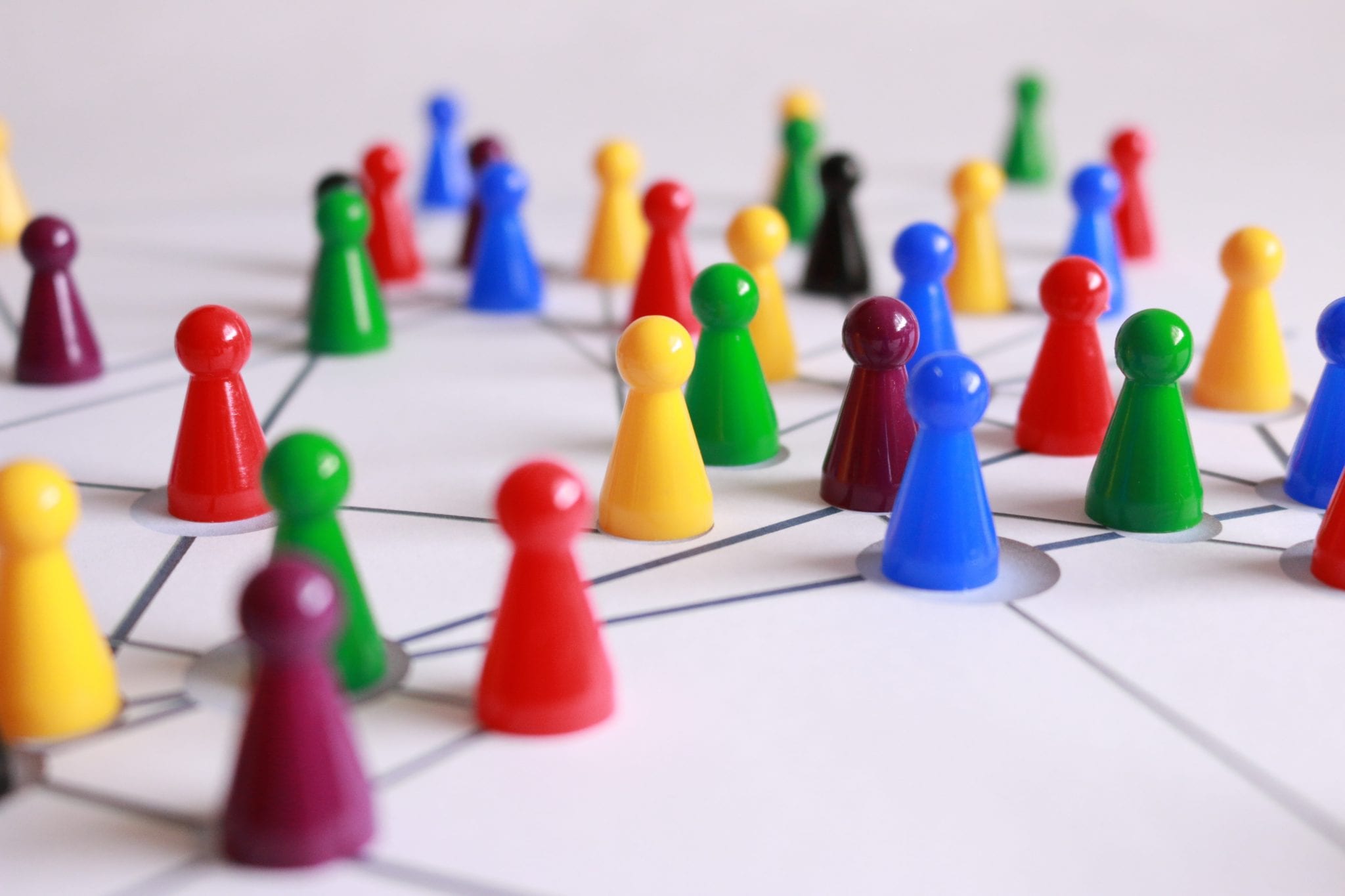
Would you like to be more productive? Of course, you want to be more productive! But we want to find a better way to be more productive — and that’s called Purposeful Productivity, and likely why you’re currently reading this article.
Sure. You can devour the countless books and hacks out there that promise you’ll be more productive — we all do — and these are pretty helpful and motivational. However, even the best productivity advice won’t matter if you don’t know your purpose. As Rachel Hollis ideally put it, “Productivity is not time management, it’s purpose management.”
But, how can you practice purposeful productivity? Well, here are some tips to get you on your way.
Know Your Values
“As humans, we are most fulfilled when we enact our values,” notes Mei Burgin, Vice President of Professional Services at Opus One Solutions from GE Digital. “Weeks and months fly by, and you may feel like you haven’t accomplished anything meaningful.” Learning what drives you can help you spend your time more productively.
At the same time, everyone has their own set of values. For Mei, her top values are:
- Positive Attitude
- Connecting & Bonding
- Concern for Others
- Forward Action
- Personal Growth/Learning
- Courage
- Discovery
- Truth
- Joy
- Fulfillment
You might find it helpful to reflect on a few activities or experiences in your life (both personal and professional) that have provided you with high or low energy.
Questions for reflection:
- Which aspects were high (or low)?
- What values were reflected in this experience?
- Describe the experience you had and how your choices or actions contributed to it.
- During this experience, what were you truly seeking?
You can make critical decisions in life and your career more effectively if you know what drives you and what drives your values.
Identify Your MVPs (Most Value Priorities)
Prioritizing tasks is the cornerstone to becoming more purposeful and productive. At the same time, this varies from person to person based on factors like values and goals. Regardless, prioritizing boils down to being able to distinguish between important and urgent tasks.
However, according to experts, the most important tasks are not the most critical. Despite this, we are prone to prioritizing urgent tasks.
You can use the Covey Time Management Matrix if you struggle to identify your priorities.
Using this framework, you can organize your tasks and achieve maximum productivity. This model was devised by Steven Covey, the author of “The Seven Habits of Highly Effective People,” and popularized by Dwight Eisenhower. By categorizing your tasks, responsibilities, and life in this way, you can organize your life accordingly:
- Urgency. Tasks or responsibilities that require immediate attention.
- Importance. High-priority, worthwhile goals.
There are four quadrants, each with a distinct property, that you can use to prioritize your tasks and responsibilities. The four quadrants are as follows:
- First Quadrant: Urgent and important
- Second Quadrant: Not urgent but important
- Third Quadrant: Urgent but not important
- Fourth Quadrant: Not urgent and not important
Despite urgent and vital tasks needing to be completed, Covey recommends spending less time on things that are not as important. You will be less likely to get distracted by urgent tasks when you focus on these essential activities.
Creating a “to-do” list, whether on a daily, weekly, or monthly basis, is a great way to prioritize. Just be sure not to overdo it with the list-making. You should list manageable tasks rather than long-term goals or multi-step plans. Put your “to-do” list on your calendar and rank it by priority.
Whenever your priorities change, reevaluate your list and delegate things that no longer need to be done.
Rethink Your To-Do-List
“Time is precious, and you should value how you spend it,” Katrina Ruth, founder and CEO of “The Katrina Ruth Show,” writes in Entrepreneur. “If you don’t decide what matters in advance, you’ll spend it all doing things that aren’t moving you forward.”
“I constantly outline my goals and dreams in a document called ‘Creating the life I want,’” adds Ruth. “I make sure I set those goals for myself (not others), identify the actions that will get me there, and schedule them each week.”
Next year, picture yourself living a purposeful life. Is today’s to-do list essential? Does that explain how you arrived there? Then, decide if you want to delete, do, or delegate the items on your list, Ruth suggests. “Sometimes it’s worth paying someone else to do things so that you can focus on what really matters: the tasks that will get you where you want to go if you do them every day.”
Conduct a Time Audit
“For the next couple of weeks, keep a time log,” recommends Abby Miller in a previous Calendar article. This doesn’t require too much thought. Make a note of how you spend your time using a pen and notebook.
Let’s say that you commute daily to work. Jot down the length and how you spend that time. If you take public transportation, do you respond to emails or kill some time scrolling through social media?
By tracking your time, you’ll be able to realistically block out time and avoid overestimating or underestimating how long something takes. You’ll also be able to pinpoint interruptions, meet deadlines, and determine your biological prime time.
“It also allows you to see where you’re wasting,” Abby adds. “For example, you spend downtime, like on your commute or when waiting for an appointment, catching up on the latest Twitter feud or whether or not Spider-Man will appear in the MCU again.” You could have instead cleaned out your inbox, read a book, or prepared for the day ahead.
Aside from the good ol’ pen and paper method, there are several electronic time-tracking programs such as Toggl, RescueTime, and Timely.
Work in Sprints
“There’s a fundamental misunderstanding about how human beings operate at their best,” says Tony Schwartz, author of the best-seller Be Excellent at Anything. “Most of us mistakenly assume we’re meant to run like computers—at high speeds, continuously, for long periods, running multiple programs simultaneously.”
This isn’t true at all. Instead, we are designed to be rhythmic creatures.
“The heart pulses; muscles contract and relax,” Schwartz explains. “We’re at our best when we’re moving rhythmically between spending energy and renewing it.”
Athletes, who balance work and rest, provide valuable insight into this. “We encourage people to work intensely for 90 minutes and then take a break to recover,” he adds. We also suggest eating small, energy-dense meals every few hours rather than three big meals a day.
“We believe napping drives productivity, although that remains a tough sell in most companies,” Schwartz adds. “Still, the reality is that if a person works continuously all through the day, she’ll produce less than a person of equal talent who works intensely for short periods and then recovers before working intensely again.”
Adopt a Single-Tasking Strategy
According to research, it takes an average of 23 minutes and 15 seconds to get back to the task.” Therefore, multitasking is one of the most detrimental habits to productivity. It’s primarily because constant task-switching encourages bad brain habits.
But why do we constantly do this to ourselves? Our reward hormone, dopamine, is released when we accomplish even the most mundane task. Since we love that dopamine, our brains encourage us to switch between small mini-tasks that give us instant satisfaction.
Doing this creates a feedback loop that makes us feel like we are accomplishing a lot. But, when in fact, we aren’t. Thankfully, there is a simple way to break this multitasking addiction. First, concentrate on one task at a time. Then, you should only move on to the next task after you’ve completed the previous one.
Additionally, single-tasking motivates you to pay attention to your priorities and reduces stress.
Do Things More Masterfully
Here are a few other hints I’ve found useful, by Andy Springer, in Entrepreneur Magazine — 36 Insanely Useful Productivity Hacks.
“Essentially, this step is about going from what’s called ‘Unconscious Incompetence’ to something called ‘Unconscious Competence,’” states Michelle McClintock, aka the Mindset Mentor.
“In short, that means we go from not knowing how little we know about something to knowing it so well that we don’t even have to think about doing it skillfully,” explains McClintock
“For me, this started when I decided productivity was sexy and that mastering it could change my life,” she adds. “Someone challenged me to believe that my happiness, fulfillment, and success depended on it, just as I am doing with you right now…”
As a result, McClintock began to take it seriously. Her goal was to excel at being truly productive by learning everything she could. “By no means have I mastered productivity, but I’m getting better at it all the time — and if I can, then so can you!”
As you figure this out, you will have to make some sacrifices up front. But that effort will save you so much time in the long run.
Among the ways McClintock is becoming more masterful are:
- Spending 45 minutes focused on “deep work.”
- Setting a Pomodoro timer for focused sessions.
- Limiting all distractions when working.
- Take regular mini-breaks.
- Getting more sleep.
- Practicing meditation more often.
- Exercising.
- During breaks, McClintock likes to watch comedy.
“All these things are science-backed ways to get more done and still maintain energy, focus, and joy,” she says.
Find Your Ikigai
Ikigai, or the reason behind being, is a Japanese concept. If you’re a Simon Sinek fan, your reason is your “why.”
In Japanese culture, everyone has an ikigai. To find out what that is for you, you just have to determine what it is. You might think that’s impossible if you’re in a rut. However, the process is relatively straightforward. A person’s passion, mission, vocation, and profession are the four primary elements of ikigai.
To get started, take a piece of paper and draw four circles. Your first circle should be devoted to what you love. The second circle is where you would record your strengths. Put your beliefs into the third circle. Finally, in the fourth circle, discuss your methods of getting paid – or how you might get paid.
What overlaps in the center is what keeps you awake in the morning. Keep that in mind as you make a productivity plan.
Before Saying “Yes,” Pause
When you pause for a moment, you have the opportunity to assess what is happening by asking questions like;
- Would you consider this a request? Is it just a suggestion?
- What’s the cost of saying “yes.”
- Is this going to help me achieve my goals or serve my mission?
- Should I make this a priority?
- Is there an alternative? For example, instead of meeting, a quick Slack chat.
When you practice this, you usually calm your anxious thoughts and prevent yourself from trying to please everyone. But, more importantly, it prevents you from overcommitting and wasting any valuable time.
Leave Some Gaps in Your Calendar
People believe that keeping a zero-based calendar will make them more productive. I can see why that makes sense. When your calendar is booked, you know exactly where and how you’ll spend your time. In addition, it makes saying no easier. There’s nothing you can do if you’re not available except decline the request – or suggest another time.
However, life does not always go as planned. Therefore, you should leave some room on your calendar for blank spaces.
Let’s say you leave 4 p.m. to 5 p.m. open. This block can then be used to put out fires if they occur. Additionally, you can get ahead of your list if you do not need to be a firefighter. If you want to take a break, you can do so as well.
Be a Quitter
Do you think that high performers are the types of individuals who never quit? That’s not true. Winners do quit all the time, says Seth Godin. “They just quit the right stuff at the right time.”
Quitting strategically means saying no to things you shouldn’t do — or don’t want to do. This could be anything from takes that could be automated, pointless meetings, or nasty habits like procrastination. It also involves delegating tasks more efficiently and cost-effectively to others.
Schedule Daily Check-Ins
By checking in with yourself each day, you will be able to find out how you are doing. Here, you can sort through your emotions, assess your physical and emotional needs, and make an intentional plan for addressing them.
Moreover, you can reflect on the day to see what you accomplished and what you didn’t. As a result, this encourages you to repeat positive behavior and make the appropriate adjustments moving forward.
Image Credit: Cottonbro; Pexels; Thank you!
Practicing Purposeful Productivity was originally published on Calendar by John Rampton.









